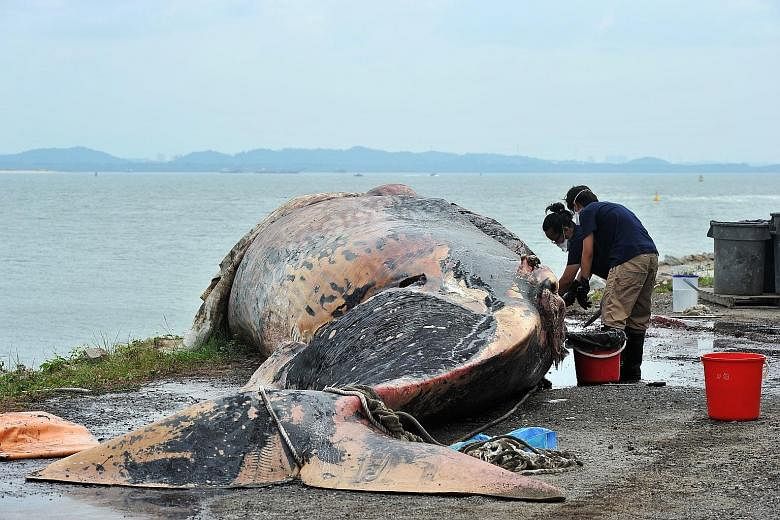The skeleton of the sperm whale found in Singapore's waters last week will eventually find a home in the National University of Singapore's Lee Kong Chian Natural History Museum, according to an update on the museum's website yesterday.
"It will now really be THE 'Singapore Whale' and will enthral a new generation of Singaporeans and residents," said the museum.
It was referring to the famous 'Singapore Whale' skeleton from the old Raffles Museum and National Museum. That whale was not actually from Singapore, having been stranded in Malacca in June 1892.
It will be a while before this new skeleton can be properly processed.
Museum staff are now studying the carcass: collecting tissues for future genetic work, trying to see what was in its gut, and trying to determine how it died.
The flesh will slowly be removed.
But the museum added: "Because we are also examining it carefully as a research specimen and due to its immense size, this will be a slow and massive (not to mention very smelly) exercise."
The 10.6m-long adult female whale is the first recorded sperm whale found in the Republic's territorial waters.
It probably died a few days before it was discovered last Friday, said the museum.
It was found with a huge gash on its back half that was still gushing blood, which may have been due to a slash from a ship's propeller.
"Whether this terrible wound was sustained after its death or was the reason for its demise is not yet known," said the museum.
The carcass is currently at the Tuas Marine Transfer Station next to the National Environment Agency's Tuas Incinerator Plant.
This is a secure place which allows easy disposal of waste and tissues, said the museum.
"It would not have been good if the whale was beached and processed in a public area, which would have presented potential health and logistic problems."
According to daily updates on the museum's Facebook page, the whale's ribs, its spine and the back of its skull have already begun to be exposed by the staff.


